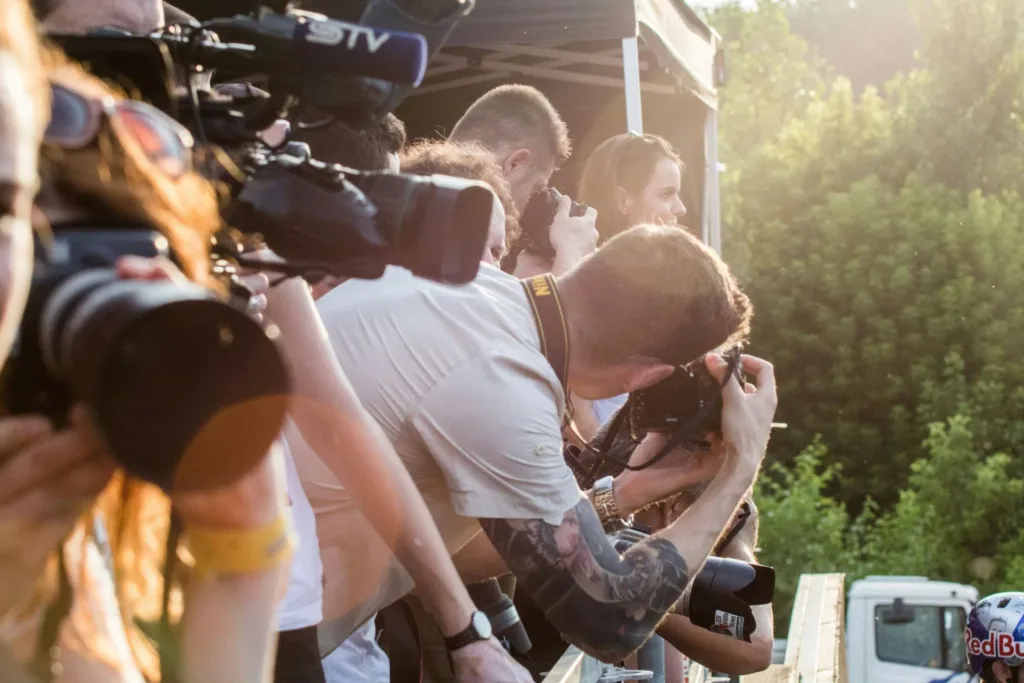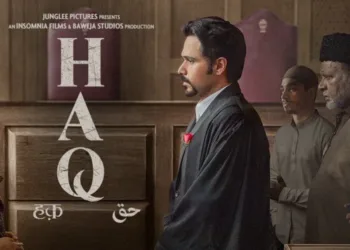HBO Max premieres “The Vallecas Files” (Expediente Vallecas) on November 7, 2025, bringing Spain’s most notorious poltergeist case back into the spotlight after 35 years. This three-episode docuseries revisits the tragic 1991 death of 17-year-old Estefanía Gutiérrez Lázaro and the terrifying paranormal phenomena that followed, becoming the only Spanish police case to officially document “unexplainable” supernatural events.
The series mixes archival video with new interviews, tracking how a private tragedy reportedly turned into a national story after a reported Ouija session at school that many believe set the timeline in motion.
Table of Contents
The Vallecas Files: Case Overview at a Glance
| Case Details | Information |
|---|---|
| HBO Premiere | November 7, 2025 |
| Episodes | 3-part docuseries |
| Network | HBO Max |
| Location | Calle Luis Marín No. 8, Vallecas, Madrid |
| Year | 1991-1992 |
| Victim | Estefanía Gutiérrez Lázaro (17 years old) |
| Producer | Buendía Estudios |
| Director | Noemí Redondo |
What Was The Vallecas Case?
The Vallecas case centers on a Madrid family, a teenage death in the early 1990s, and the swirl of fear and rumor that followed. In March 1990, Estefanía and her friends conducted an Ouija session at school to contact a deceased boyfriend. When a teacher interrupted and shattered the Ouija board, witnesses claimed gray smoke emerged, which Estefanía allegedly inhaled.

Weeks later, her health deteriorated mysteriously. She experienced seizures, hallucinations, and spoke of seeing shadowy figures. In August 1991, Estefanía died suddenly under unexplained circumstances, triggering a series of paranormal events that would haunt her family for years.
For more spine-chilling paranormal content, explore our coverage of Crime Stories: India Detectives and other gripping documentary series at TechnoSports.
The Police Report That Changed Everything
One scene in The Vallecas Files highlights the night officers entered the home after 2:00 am. The family was waiting outside in the rain. Inside, officers noted banging sounds and a wardrobe door that, by one account, swung open even with a key in the lock. A wall crucifix was found on the floor. A staff report used phrasing about “events without clear explanation”.
This became the first and only Spanish police document admitting paranormal phenomena in an official capacity. The November 27, 1992 police report documented:
- Unexplained banging sounds throughout the apartment
- A locked wardrobe door that violently opened despite having a key in the lock
- A crucifix torn from the wall and found on the floor with visible scratch marks
- Objects moving independently without physical contact
- Photographs that spontaneously caught fire
- Voices and screams emanating from empty rooms
The police officers who investigated, including Inspector José Negri, went on record describing the phenomena as beyond rational explanation.
How The Documentary Presents The Case
The show treats those claims as testimony, not proof. Family voices are placed alongside physicians, journalists, and researchers. Viewers get timelines, floor plans, and period footage that ground the story in a small apartment in Puente de Vallecas.
The three-episode structure takes different approaches:
- Episode 1: Horror-focused, emphasizing the terrifying phenomena
- Episode 2: Thriller format, investigating the mystery
- Episode 3: Social drama examining media manipulation and family trauma
Looking for more true crime documentaries? Check out our article on Beast of Bangalore on Netflix for similar investigations.
Media Frenzy & Cultural Impact
The series also marks how TV crews and tabloids jumped on the case. That part matters. Public attention shaped how neighbors spoke about the home and how officials responded. The Vallecas case became a media sensation throughout Spain in the 1990s, appearing on countless television programs and in newspapers.
The case inspired the 2017 Netflix horror film “Verónica” directed by Paco Plaza, which became one of the platform’s most-watched horror movies worldwide. The film dramatized Estefanía’s story, though it took creative liberties with the actual events.
Spanish paranormal investigator Iker Jiménez featured the case extensively on his program “Cuarto Milenio,” conducting interviews with the Gutiérrez Lázaro family and visiting the actual apartment where the events occurred.

The Family’s 35-Year Burden
Thirty-five years later, the Gutiérrez Lázaro family speaks publicly in the documentary about the terror, manipulation, and trauma they experienced. They describe how the paranormal claims eclipsed their grief over Estefanía’s death, turning their private tragedy into a public spectacle.
The family faced harassment, skepticism, and accusations of fabrication while dealing with genuine loss. The documentary explores how media sensationalism destroyed their normal life, forcing them to relocate multiple times to escape attention.
For more entertainment news and documentary recommendations, visit our comprehensive entertainment section at TechnoSports.
Skeptics vs. Believers: The Ongoing Debate
The series lets that paperwork sit next to skeptical views. Doors can rattle. Old buildings can creak. Memory can stitch separate moments into a single scene. Even so, the nighttime entry, the written notes, and the signatures give the episode its anchor.
The documentary doesn’t force conclusions but presents multiple perspectives:
Believers argue: The official police documentation, multiple witness testimonies, and physical evidence (scratched crucifix, burned photographs) support paranormal activity.
Skeptics suggest: Grief-induced hallucinations, carbon monoxide poisoning from the building’s old infrastructure, mass hysteria, and media manipulation could explain the phenomena.
Medical professionals noted Estefanía’s mysterious symptoms before death included seizures and hallucinations, possibly indicating undiagnosed epilepsy or neurological conditions rather than supernatural possession.
Where The Paranormal Meets Psychology
The documentary explores how psychological trauma, grief, and media pressure can amplify beliefs in the supernatural. Directors Irene del Cerro and Jorge Pérez Vega stated their goal was to show “how the legend and media-driven fear eclipsed the family’s human drama.”
The case raises profound questions about collective trauma, the power of suggestion, and how society processes unexplainable tragedies. Did paranormal forces truly haunt the Gutiérrez Lázaro family, or did a combination of grief, media manipulation, and cultural superstition create an urban legend?
The Lasting Legacy
The Vallecas case remains embedded in Spanish popular culture, referenced in horror films, television shows, books, and countless paranormal investigation programs. The apartment at Calle Luis Marín No. 8 became infamous, with subsequent tenants also reporting unexplained phenomena, though these claims remain unverified.
For paranormal enthusiasts and horror fans, the case represents one of the most documented alleged hauntings in European history, comparable to England’s Enfield Poltergeist or America’s Amityville Horror.
Looking for more mystery and suspense? Explore our guide to Crime Scene: The Times Square Killer and other true crime documentaries.
FAQs
Q: Is The Vallecas Files documentary based on a true story?
A: Yes, The Vallecas Files is based entirely on the real 1991-1992 Vallecas case involving the Gutiérrez Lázaro family in Madrid, Spain. Estefanía Gutiérrez Lázaro was a real 17-year-old girl who died under mysterious circumstances in August 1991, and the subsequent paranormal phenomena were documented in an official Spanish police report dated November 27, 1992. The HBO Max docuseries features interviews with the actual family members who experienced these events, archival footage from the time period, and the authentic police documentation. While skeptics debate whether the phenomena were truly paranormal or had psychological/environmental explanations, the events themselves are historically documented and well-known in Spain.
Q: Can I visit the Vallecas apartment where the haunting occurred?
A: The apartment at Calle Luis Marín No. 8 in the Vallecas district of Madrid is a private residence, and it is not open to the public for tours or visits. The Gutiérrez Lázaro family no longer lives there, having moved away years ago due to the trauma and media attention. While paranormal enthusiasts and curiosity seekers have visited the street and building exterior over the years, entering the apartment would constitute trespassing. Spanish paranormal investigator Iker Jiménez was granted special permission to film inside the apartment for his television program “Cuarto Milenio,” but this was an exceptional circumstance arranged with the property owners. Out of respect for current residents’ privacy and the family’s trauma, it’s best to experience the case through the HBO documentary rather than attempting to visit the location.








